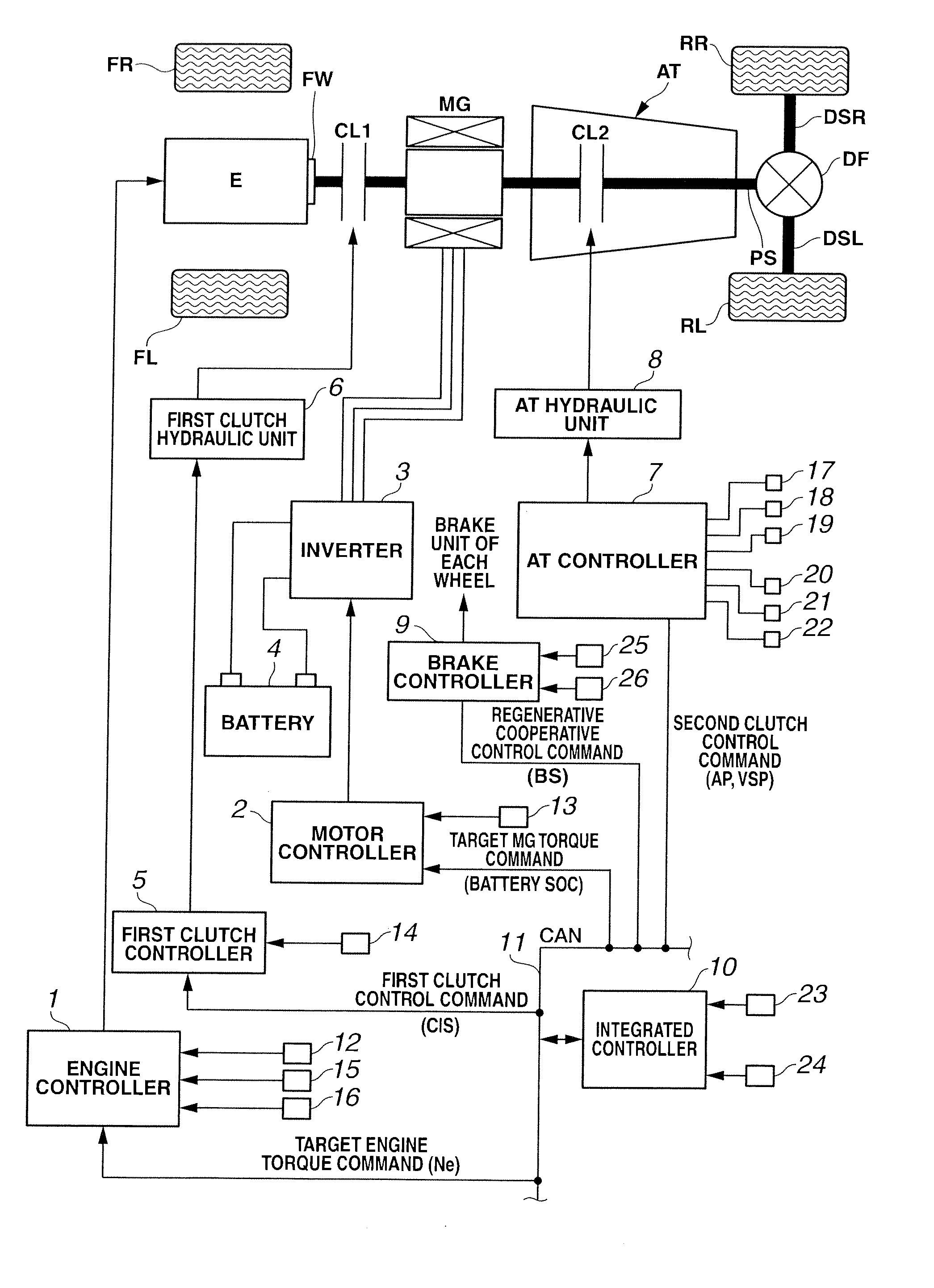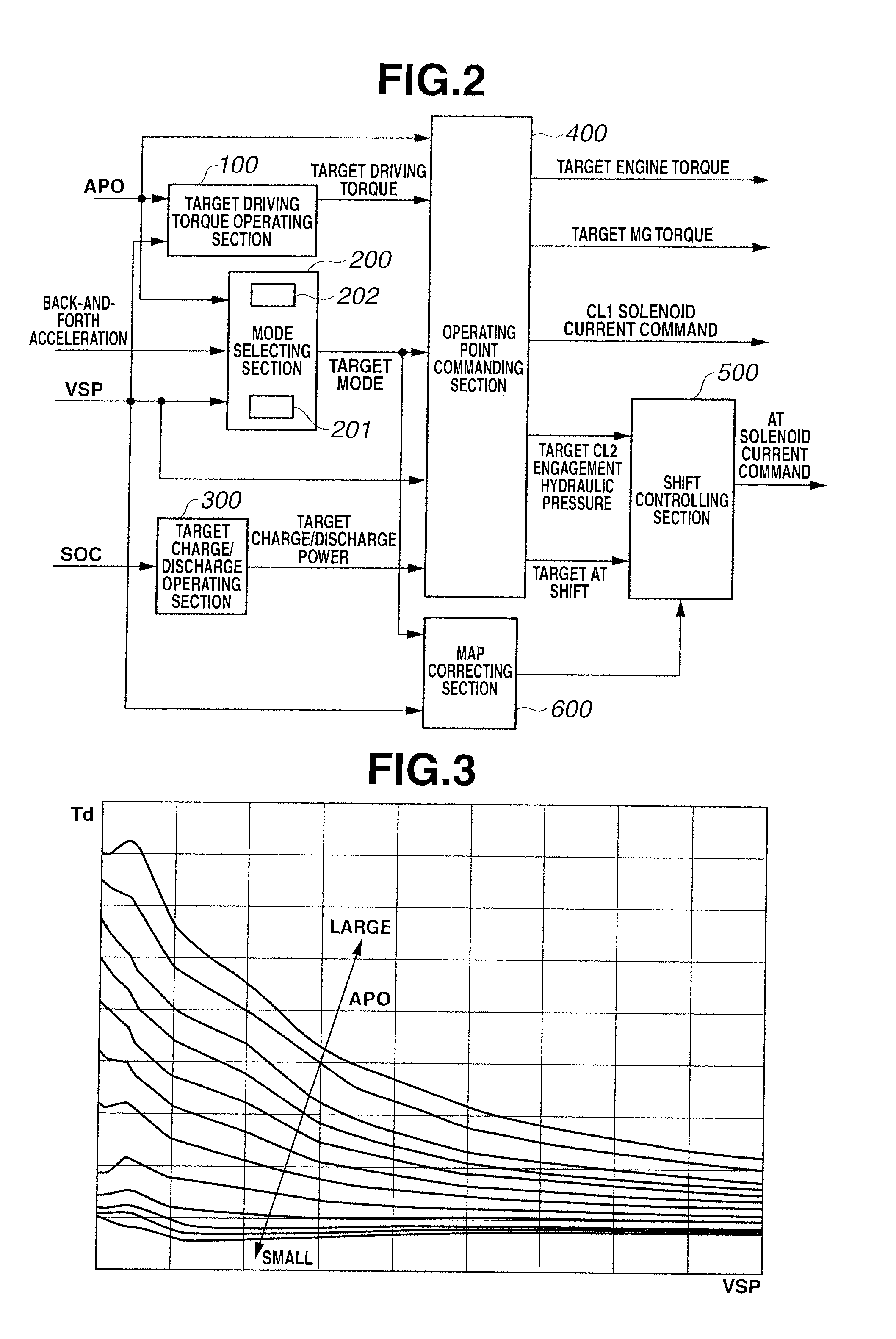Hydraulic control apparatus for vehicle
a technology of hydraulic control apparatus and vehicle, which is applied in the direction of fluid gearing, instruments, gearings, etc., can solve the problems of clutch deterioration, clutch is prone to be in a fully disengaged state, and engagement shocks, so as to reduce the occurrence of clutch engagement shocks and improve the accuracy of clutch control
- Summary
- Abstract
- Description
- Claims
- Application Information
AI Technical Summary
Benefits of technology
Problems solved by technology
Method used
Image
Examples
embodiment 1
[Drive System]
[0026]First, a drive system of a hybrid vehicle will be explained. FIG. 1 is a whole system block diagram showing a rear-drive hybrid vehicle of the embodiment 1.
[0027]The drive system of the hybrid vehicle in the embodiment 1 has an engine E, a first clutch CL1, a motor / generator MG, a second clutch CL2, an automatic transmission AT, a propeller shaft PS, a differential gear DF, a left drive shaft DSL, a right drive shaft DSR, a rear left wheel RL (driving wheel), and a rear right wheel RR (driving wheel). Needless to say, FL is a front left wheel, and FR is a front right wheel.
[0028]The engine E is, for instance, a gasoline engine, and a valve opening of throttle valve etc. is controlled on the basis of a control command from an after-mentioned engine controller 1. As shown in FIG. 1, a flywheel FW is provided at an engine output shaft.
[0029]The first clutch CL1 is a clutch that is arranged between the engine E and the motor / generator MG. Engagement / slip-engagement / d...
PUM
 Login to View More
Login to View More Abstract
Description
Claims
Application Information
 Login to View More
Login to View More - R&D
- Intellectual Property
- Life Sciences
- Materials
- Tech Scout
- Unparalleled Data Quality
- Higher Quality Content
- 60% Fewer Hallucinations
Browse by: Latest US Patents, China's latest patents, Technical Efficacy Thesaurus, Application Domain, Technology Topic, Popular Technical Reports.
© 2025 PatSnap. All rights reserved.Legal|Privacy policy|Modern Slavery Act Transparency Statement|Sitemap|About US| Contact US: help@patsnap.com



